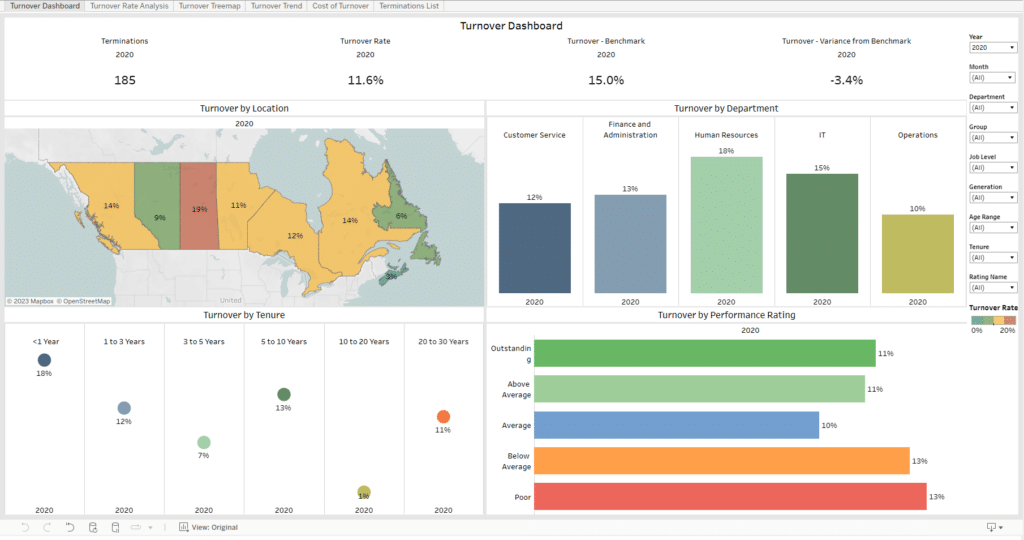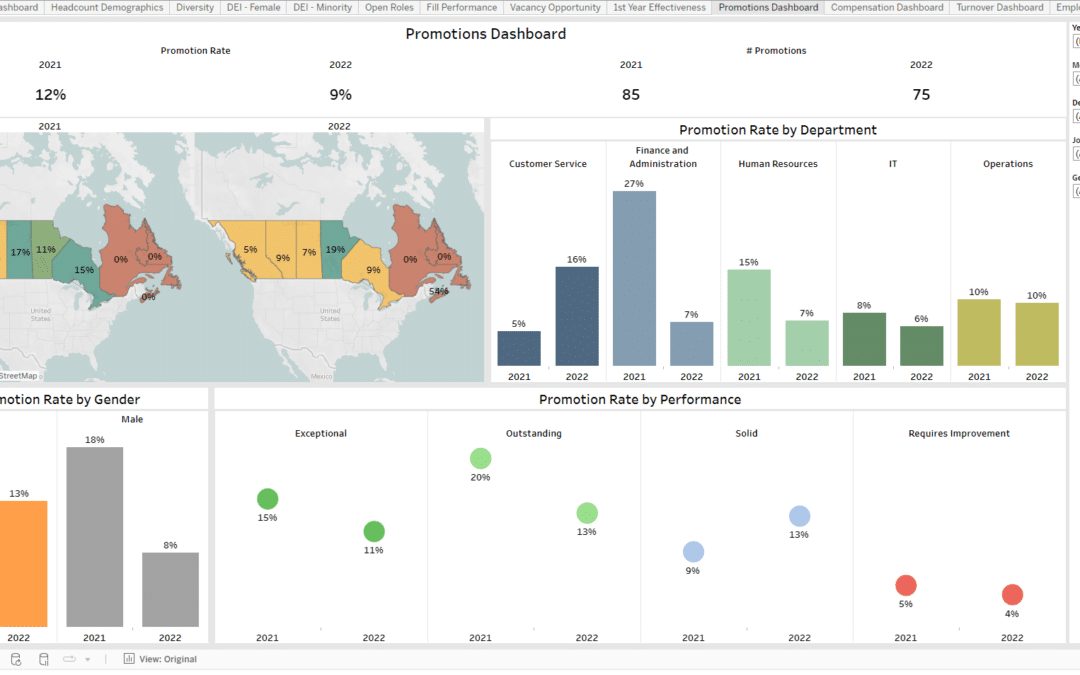It’s no secret that employee retention has skyrocketed to the top of the HR agenda across industries. The battle to retain top talent seems more and more urgent these days, and for good reason! By curbing attrition rates, companies not only dodge disruptions but also save a pretty penny. According to SHRM, the cost of replacing an employee can reach a whopping 50%-60% of their annual salary.
But what is the best way to go about creating a solid retention strategy? How do you pinpoint the areas of opportunity? How do you choose which initiatives to focus on? Well, a whopping 82% of organizations (according to SHRM Research) now embrace people analytics to tackle the turnover challenge. In this blog, we’ll take a deep dive into the role of analytics in reshaping HR, specifically around how leveraging your people data holistically can supercharge your ability to create effective employee retention strategies.
Understanding Employee Retention: Its Importance in HR
Ensuring employee retention is a top priority for businesses worldwide. It’s not just about holding onto valuable talent; it’s about creating a work environment that supports growth, stability, and employee satisfaction. Effective strategies for employee retention can boost engagement, morale, and the overall quality of your products or services.
On the flip side, high employee turnover can have detrimental effects on a company. Apart from the financial implications, there are other significant risks:
- losing institutional knowledge
- decreased productivity
- lowered staff morale
- negative impact to company culture
- slower progress on key initiatives
- Impact to Employer Branding
The time and resources spent on recruiting, onboarding, and training new employees only add to the costs of high turnover.
Amidst these challenges, it’s important for businesses to proactively implement effective strategies to enhance employee retention. HR leaders are embracing people analytics to gain valuable insights into employee behavior, job satisfaction, and retention. By leveraging this data, forward-thinking organizations can cultivate a positive and supportive workplace environment.
The Role of People Analytics in Identifying Influential Factors
In the face of escalating employee turnover, people analytics emerges as a beacon of hope for people leaders. At its core, people analytics is about leveraging data to generate profound insights about your workforce, ultimately driving strategic decisions to enhance employee satisfaction and retention.
One of the significant advantages of analytics is its ability to go beyond superficial metrics and dive deep into a wealth of data – from employee surveys and performance reviews to patterns in leaves, lateness, and overtime. By looking at this data more holistically, HR can pinpoint specific issues that may be leading to dissatisfaction and, consequently, high turnover rates. For instance, are employees leaving because of a lack of growth opportunities? Or is it due to an unsupportive manager? These are the kinds of questions people analytics can answer.
Moreover, it provides trends and forecasting abilities, allowing organizations to proactively tackle potential issues before they result in turnover. For instance, by leveraging data from past employment cycles, it can anticipate which employees are likely to resign based on factors such as job function, age, or tenure.

In this way, people analytics equips teams with the necessary tools to understand their workforce better, identify underlying causes of attrition, and act on these insights in a meaningful and impactful way. This data-driven approach is revolutionizing the way companies manage employee retention, turning it from a guessing game into a strategic initiative backed by solid evidence.
Strategies to Improve Retention: Insights from People Analytics
As we delve deeper into the intricacies of people analytics, we begin to understand its transformative impact on HR strategies. This data-driven approach provides an unbiased, comprehensive view of employee engagement and satisfaction, enabling the development of targeted retention strategies that address specific problem areas.
For instance, if the data reveals a correlation between high attrition and lack of career advancement opportunities, businesses can focus on nurturing a culture of growth and progression. This can involve creating clear career pathways, providing regular training and development opportunities, or implementing a robust mentorship program.
Likewise, if the data points towards dissatisfaction with management styles, organizations can invest in leadership training programs to improve management-employee relationships. Initiatives such as 360-degree feedback can further enhance transparency and communication, promoting a positive work environment.
Moreover, people analytics can help in identifying employees who may be at risk of leaving, enabling preventative measures to be taken. By proactively addressing concerns and offering tailored solutions, businesses not only increase their chances of retaining top talent but also foster a culture of empathy and understanding.
In essence, the insights provided pave the way for more informed, strategic decisions. By understanding the specific factors impacting employee retention, organizations can tailor their efforts to address these issues, resulting in increased job satisfaction, reduced turnover, and a more engaged and productive workforce.
Harnessing the Future: Integrating People Analytics into HR Operations
As we continue to live in this age of digital disruption, integrating analytics into the HR function is no longer a luxury, but a necessity for businesses keen on staying competitive. This data-driven approach, when incorporated correctly, has the potential to reshape the fabric of HR teams, moving it from a traditional administrative function to a strategic powerhouse driving business outcomes.
Embracing this approach requires HR professionals to develop new skills and competencies, particularly in data analysis and interpretation. Fortunately, as HR technology evolves, user-friendly software platforms are emerging, making people analytics accessible to HR teams of all sizes and levels of technical expertise.
Moreover, organizations should foster a data-driven culture that encourages the use of analytics across all levels, from top management down to individual team members. This involves promoting transparency and openness in sharing insights and including employees in the process of using data for decision-making.
However, as with any tool, the power of people analytics lies in how its used. While it can provide invaluable insights into employee behavior and retention, it’s important to remember the human element in HR. Data should serve as a guide, not a dictator, of decision-making. Balancing the insights gathered with empathy and understanding of individual employee experiences will result in the most effective and resonating employee retention strategies.
The incorporation of people analytics into the HR function is an exciting step towards future-proofing businesses. It empowers organizations with the necessary tools to make informed and strategic decisions, fostering a work environment that will not only retain top talent but also cultivates their growth and satisfaction. By adopting a people-first approach supported by data-driven insights, businesses can navigate the complexities of employee retention and build a resilient, committed, and high-performing workforce.
